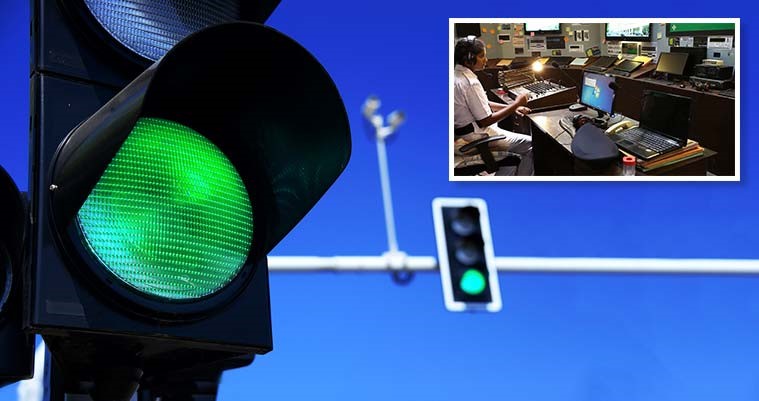Traffic Signals: More than Meets the Eye

How exactly do traffic signals work? We see them every day. For drivers, they provide directions to either keep going, slow down, or come to a complete stop. Signals often appear to know when you are in a hurry, because they always seem to turn red as you approach them. No, they are not actually plotting against you, but traffic signals are in fact pretty sophisticated machines.
From fixed time to inductive loop
With advances in technology, traffic signals have come a long way. Signals used to follow a fixed time through a predetermined sequence of signal operations, whether or not cars were present. One obvious drawback to this “old school” technology was that drivers might sit at a red light, even though there were no other cars in sight.
Starting in the early 1960s, traffic agencies began introducing detection technologies, which control the traffic signal through inductive loops. Inductive loops work by detecting a change of inductance initiated from the metal in cars. Inductive loop technology consists of a coil of wire embedded in the road’s surface. You might notice these areas as big rectangle outlines on the ground that can be seen right before the stop bars.
According to the Federal Highway Administration, as of the mid-2000s, the inductive loop detector was still the most widely used sensor in a traffic management system. However, some problems associated with inductive loops include vulnerability to stress from traffic and temperature, traffic disruption, pavement degradation, and questionable accuracy, as well as the need for lane closure to install or maintain inductive loops. Agencies have therefore sought alternative vehicle detection technologies.
The move to smart, adaptive technology
The traffic signals of today have become smart and adaptive. You may have noticed video cameras on top of signal masts that point in the direction of the oncoming traffic. These cameras detect the presence of approaching cars and—through adaptive signal technology—adjust the signal timings based on the amount of traffic coming through the intersection. The lights then change “intelligently” depending on which roads have fewer or more vehicles.
Other advances include sensors mounted on emergency vehicles, known as traffic preemption devices. These devices activate lights as emergency vehicles approach an intersection to suspend the normal traffic cycle (i.e., initiate a preemption sequence). The traffic lights to all intersection approaches are switched to red except for the light-triggered for the emergency vehicle.
Sometimes, an additional signal light is placed nearby to indicate to the emergency vehicle that the preemption sequence has been activated and to warn other motorists that an emergency vehicle is approaching. Once the emergency vehicle passes through the intersection, the normal traffic light cycle resumes.
Geospatial technologies also offer new possibilities for traffic detection. For example, in a recent case study, the City of Savannah, Georgia, used GPS navigation devices to initiate preemption of the signals along a busy corridor, which significantly reduced arrival and response times for emergency vehicles.
As technologies and capabilities continue to expand, traffic agencies will have greater opportunities to serve and protect the traveling public through cutting-edge traffic signal systems.
So, the next time you are at a traffic light, know that there is a lot going on behind the scenes as the lights cycle from red to green. Someday soon, the visible signals may even go away altogether as autonomous cars “talk” to each other and roadway devices without you being aware!
Sadi Wadi, PE, is a transportation project engineer for EBA Engineering, Inc. He can be reached at 410.844.3825 or sadi.wadi@ebaengineering.com.
